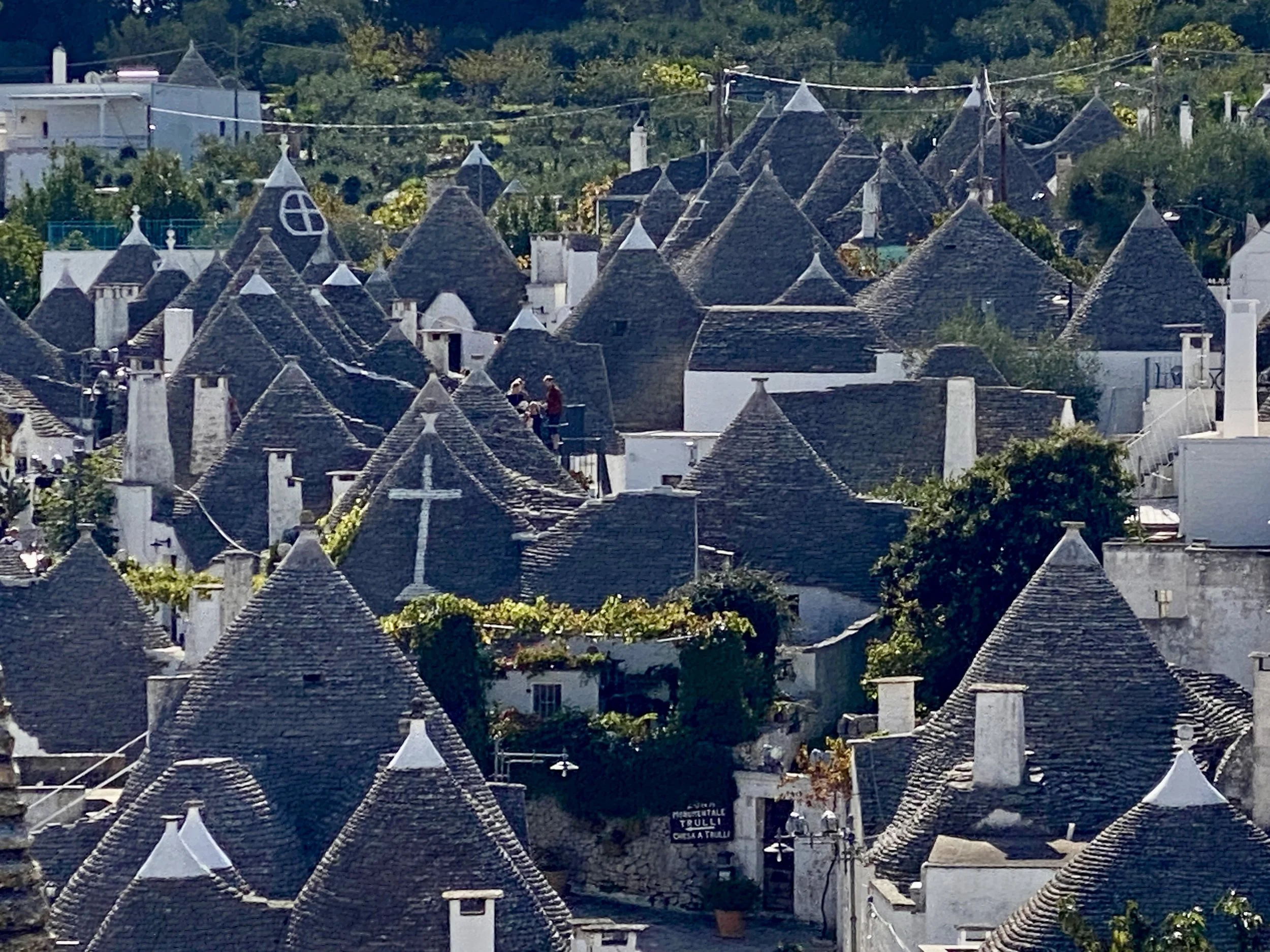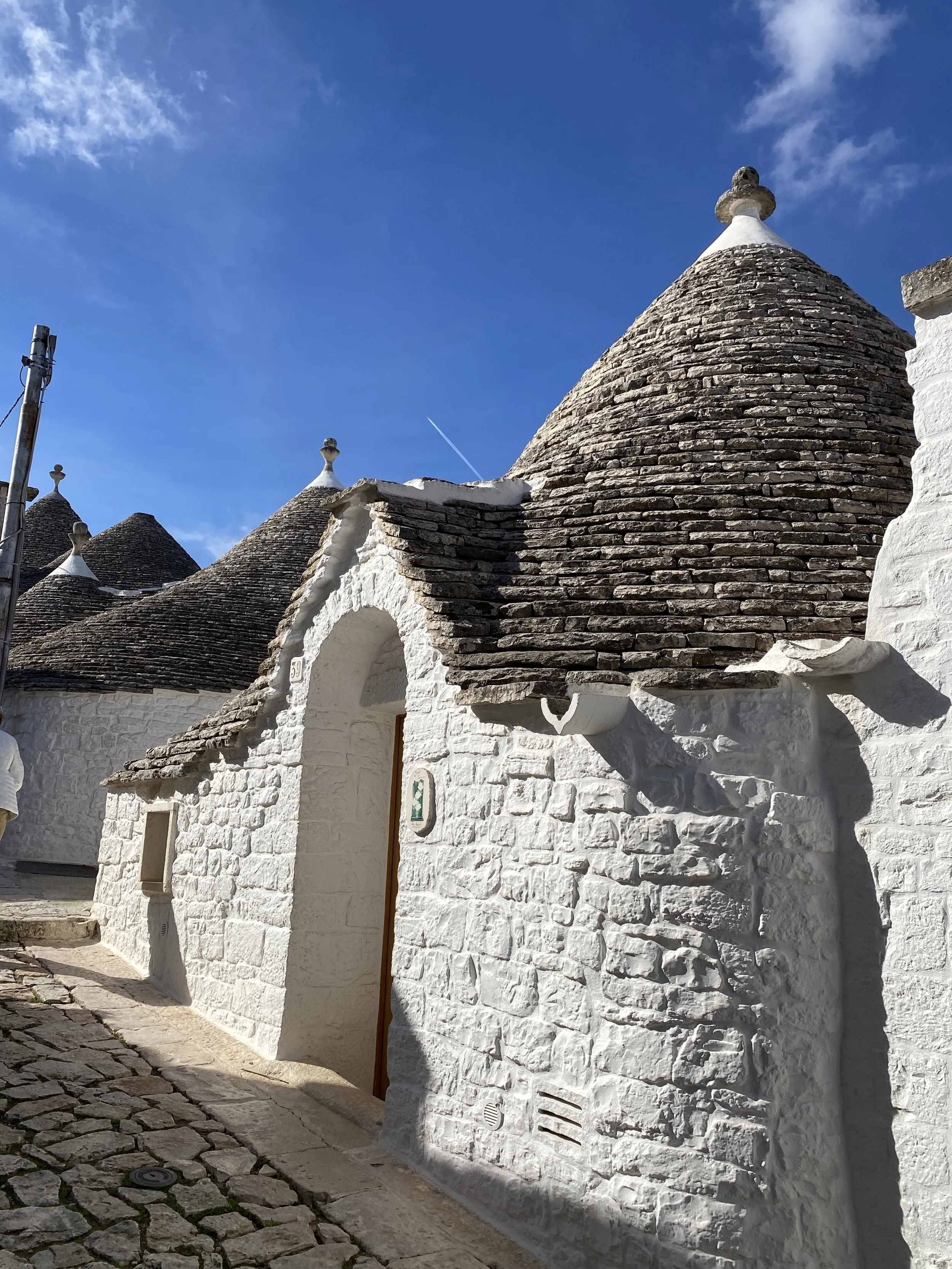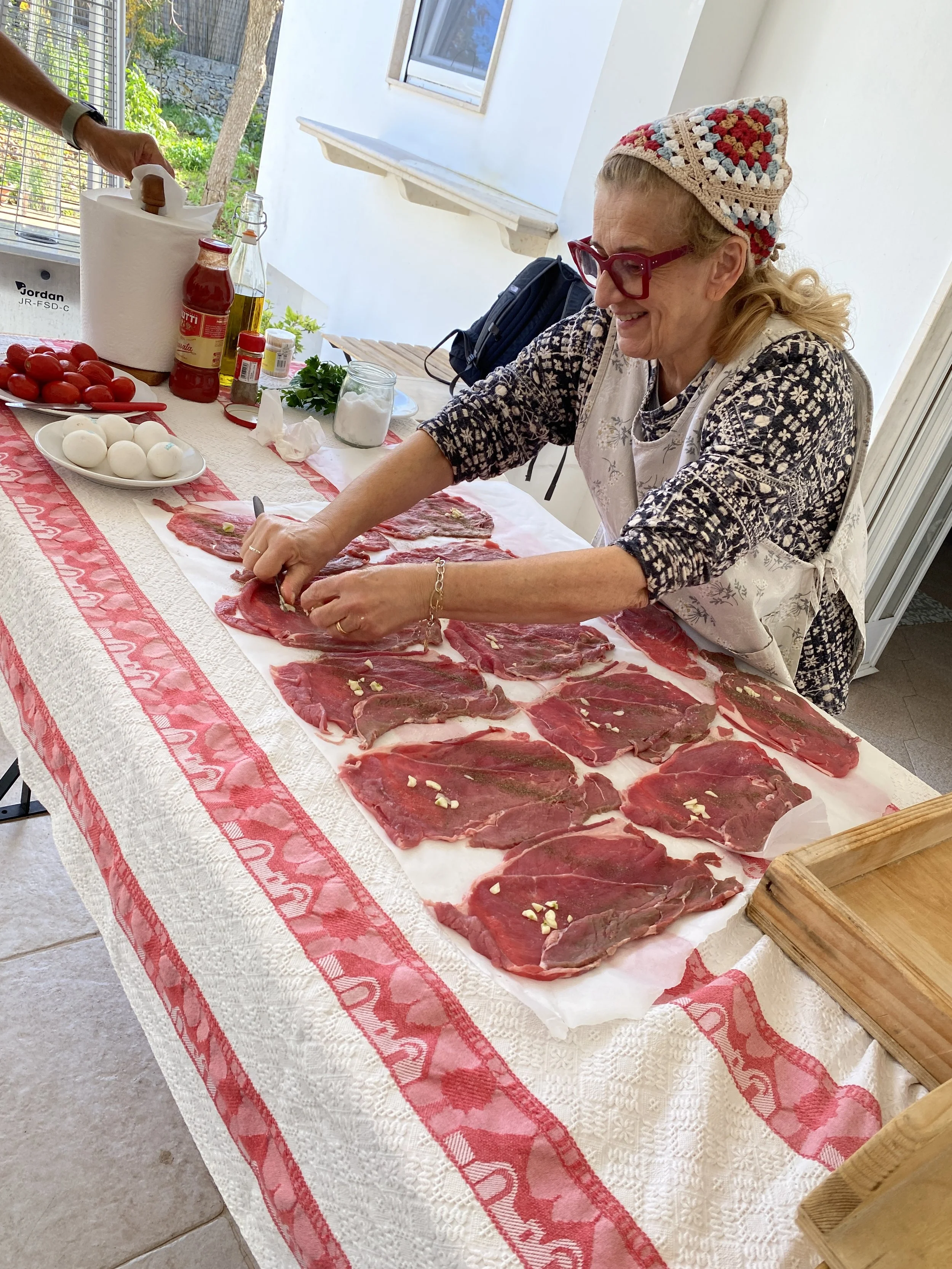A Deeper Look at Alberobello
/Alberobello is one of those places that lingers in the mind long after you’ve waved goodbye to its twisting lanes and whitewashed trulli. So when Max, co-owner of Ciao Andiamo and travel guide extraordinaire, suggested a day there as part of our Book Club with a View, I may have cheered out loud.
Especially when I learned he’d booked Mimmo as our guide. If you read my earlier post from five years ago, you’ll understand why—but even that doesn’t capture him. Mimmo vibrates off the page like he’s wired directly into the town’s electrical grid.
Case in point: we tried to take a simple photo to send the kids, and he hijacked it into a video message, professing his love for them and insisting they come back soon.
Only Mimmo.
Even having toured with him before, I still hung on every word. I had forgotten—how?—that while many visitors assume “Alberobello” means “beautiful tree,” it actually translates to “war in the trees.” That set the tone for the rest of the walk: nothing here is quite what it first seems.
He led us through the UNESCO-recognized Rione Monti and Aia Piccola districts, explaining how the trulli architecture evolved—conical stone roofs built without mortar so they could be dismantled quickly to avoid taxes. (A detail only Italy could make charming.)
He showed us how each trullo (including his childhood one that he’s preserved) sits atop a cistern. He pointed to painted roof symbols once used to thank the church for feeding hungry children, and explained that though nowadays people paint nonsense symbols, the tradition is rooted in gratitude.
We talked agriculture too: how Puglia’s constant shifts between hot days and cool nights make it a paradise for olives, almonds, and vines. And how these beehive-like structures aren’t unique to Italy—you can spot cousins of trulli in places as far away as Turkey and the Middle East.
He also told us stories I’d never heard before. How Alberobello residents hid Jewish families during World War II, using the trulli’s secret spaces and twisting alleyways to keep them safe. It’s a strange thing, to stand in a place so whimsical and realize how fiercely it has protected its people.
Later, over glasses of local digestivi in his wine bar, I told him he seemed the unofficial mayor of Alberobello—constantly greeting passersby, kissing children on the forehead, stooping to pick up stray bits of trash. He laughed and said he’d be terrible at politics. One of those statements that is both true and deeply untrue.
Later, when our group reflected on the day, I said that usually someone’s affection warms you only when it is singular. But Mimmo’s warmth expands outward, like sunlight on water—touching everyone, not diluted but multiplied.
He proved my point at lunch. He read my old blog post, chuckling, reading lines aloud. Once finished, he looked at me with that unmistakable Italian eye contact—the kind that would be borderline rude in the U.S. but in Italy is simply how one human acknowledges another. If you don’t know, that eye contact is more important than clinking glasses during “cheers”. Try it. It’s hard not to feel seen and grateful to see others when you look them in the eyes without flinching away.
“I love you,” he told me, simply and with a grin. I told him I loved him too, and just when the weight of his gaze grew too heavy, he turned it on someone else. That’s when it clicked: Mimmo isn’t performing affection. He’s echoing the universe’s own truth—we are all connected, and love is the line that stitches us together.
Is it any wonder he showed up in more than one travel journaling entry?
Now, on to that lunch. Because it was transformational.
Not only because the food was sublime (though, yes), and not only because we cooked it in a trullo and sat in the garden with a heart-stopping view, but also because we got to take part in the cooking. Antonella, a friend of Mimmo’s mother, guided us, apron on, crocheted kerchief holding back her hair, speaking not a word of English but fluent in hospitality.
Mimmo translated, but honestly, cooking is half language, half charades and anyway even though I easily get derailed talking about the weather, I am practically fluent in food.
Soon we were tearing bread for fried bread balls (which I suggested we rename “cheese balls,” given how Antonella’s “pinch” of grated cheese escalated into “entire container”). We rolled orecchiette—handy practice before my stay on Via delle Orecchiette in Bari. We kneaded focaccia enriched with a boiled potato and its cooking water, a trick I’m convinced must be a state secret. And we rolled veal to simmer in tomato and wine until the kitchen smelled like the dictionary definition of comfort.
We feasted until our bellies and hearts were both delightfully overfull.
How lucky, we kept saying.
How lucky this fine day was ours.
How lucky to be surrounded by laughter and the aroma of olive oil caramelizing the edges of focaccia.
How lucky that Max’s network of friends extends to these beautiful people for us to connect with and feel at home.
How lucky to be in this magic town with these magic people.
How lucky to be here, together.
How lucky, how lucky, how lucky.
Do you want more stories like this in your email inbox? Sign up for the Grapevine and once a month you’ll receive wanderlust inspiration, recipes, and top-secret travel tips. Plus, as a special welcome for signing up, you’ll get a free e-copy of “Santa Lucia”, the bestselling novel set in Italy. Just think, in mere moments, you could escape to the rhythms, beauty, and mystery of Italy. What are you waiting for?























